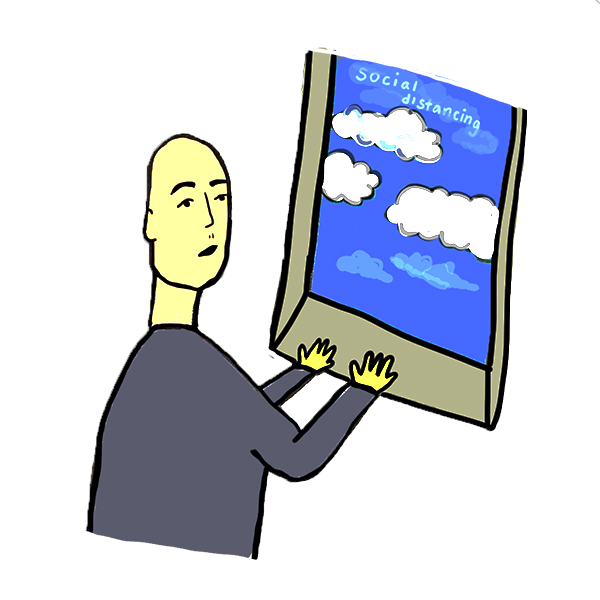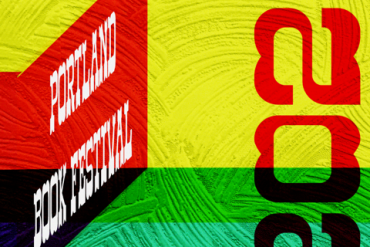The past century has seen propaganda evolve significantly; from impassioned speakers and pamphlets to series of novels, TV shows, popular music, and even video games. The disturbing connection between the far right in the U.S. and the increasing growth of multimedia distribution for hate speech has lain deep roots in today’s white nationalist movements.
When American Nazi Party (ANP) leader George Lincoln Rockwell was assassinated in 1967, a new hate group would emerge out of the power vacuum left in his absence. Led by former ANP member William Luther Pierce, the National Alliance would grow to disseminate hateful propaganda across the nation for 50 years, alongside one of the most important texts in white power circles.
Written in 1978 by William Luther Pierce under the pseudonym ‘Andrew Macdonald,’ “The Turner Diaries” went on to become a blueprint for violent actions by white nationalists as far away as Germany. Written as a novel, “The Turner Diaries” paints a narrative of a race war in the United States during the 1980s. ‘Brave,’ anti-government white nationalists take on a government which has deprived them of weapons, has promoted an anti-racist agenda, and is secretly run by Jewish conspirators. Pierce’s depiction of a race war starts off with the bombing of an FBI building, leading to the extermination of non-whites in the United States, and ultimately the world. No ‘race-traitor’ is spared, as those seen as enablers of the ‘zionist, anti-racist government’ are lynched in the streets.
This successful book, sold exclusively through the National Alliance, inspired Bob Matthews to form a group in the ‘80s known as The Order. Named after the leadership of the white guerilla fighters of “The Turner Diaries,” Matthews and his companions proceeded to conduct numerous robberies, armed attacks, and the murder of popular liberal radio host, Alan Berg. By disrupting the American economy and attacking vocal critics of white nationalism, The Order carried out a comprehensive terror campaign in the hopes of inciting a race war in the United States. After Matthews was killed in an FBI shootout and the remaining members of The Order were incarcerated for their attempts to foment white revolution in the United States, a young gulf-war vet, Timothy McVeigh, took his mantle and sought to recreate the beginning of the race war. In 1995, Mcveigh decided to mirror a major plot point of “The Turner Diaries” by bombing an FBI headquarters. His bombing of the Alfred P. Murrah Federal Building in Oklahoma City resulted in the deaths of 168 people, with over 600 injured in the attack.
In the early 1980s, Tom Metzger, a former member of David Duke’s Knights of the Ku Klux Klan, decided to form a group known as White Aryan Resistance (WAR). Within a short period of time, Metzger’s group created a newspaper, telephone hotlines, and a cable access show which, at its peak, broadcast in 62 cities in 21 different states.
Through these media formats, Metzger was able to give a disparate community a place to coordinate, organize, and expose unsuspecting youth to white power books, CD’s, and noted celebrities.
Metzger’s public access show “Race and Reason” provided a platform across the country for white nationalists to connect with each other and reach new audiences. Metzger would host different white nationalists and representatives of hate organizations and engage in lengthy debates about diverse topics such as national socialism, racial theory, and Christian identity politics—a Christian theology concept that claims whites are God’s chosen people—while introducing the goals and strategies of their respective organizations.
The dangers of shows like “Race and Reason” demonstrate how useful these efforts were to bring together geographically separated movements. Prominent white nationalists like William Luther Pierce and Richard Butler, founder of notorious white nationalist organization Aryan Nations, were able to find a unified voice across large distances in the hopes of reaching as many people as possible.
When the National Alliance sought to expand their propaganda machine in the late 1990s and early 2000s, the creation of their record label and merchandising arm Resistance Records increased their access to a market of angry, vulnerable, young white men. In Julia Scheere’s 2002 article “Games Elevate Hate to the Next Level,” William Luther Pierce stated, “From the very beginning, we have been a multimedia organization, interested in using communication, using every medium that we can to reach the public effectively.” Bands such as Rahowa (a shortening of Racial Holy War), Prussian Blue (two pre-teens who performed white power folk music), and Burzum (black metal created by convicted Norwegian murderer, Varg Vikernes) helped bring its musical arm to prominence across the United States.
In 2001, ads reading, “Celebrate Martin Luther King Day With A Virtual Race War!” appeared in white nationalist publications. “Ethnic Cleansing,” a PC game created by Resistance Records, was released on MLK day the following year and sold for the symbolic price of $14.88. The number 14 refers to the 14 words of the white power mantra, “We must secure the existence of our people and a future for white children.” 88 signifies the numeric placement of the letter H in the alphabet and translates to HH, meaning Heil Hitler. The 14 words were coined by David Lane, member of The Order and one of Alan Berg’s murderers, and have transcended through all aspects of white nationalist culture. In the game, players play as first-person shooters in a “ghetto” where their goal is to shoot people of color. African-American caricatures make monkey sounds when shot; latinx characters scream “Ay Caramba!” Hidden rooms display projections of William Luther Pierce advocating for a race war and the white revolution. Once the protagonist reaches the subway, they must murder Jews, some of which are stereotypically dressed in Haredi dress, who scream “Oy Vey!” when shot. The final challenge is to kill a characterization of then-Israeli Prime Minister Ariel Sharon.
While this game was not the first attempt to recruit young people to white supremacy through video games, it represented a progression in not only complexity, but also technological advancement in the pursuit of white nationalist recruitment. Games such as Aryan 3, Shoot the Blacks, NSDoom, and WPDoom had already existed on websites such as the World Church of the Creator, whose leader Matt Hale sought to propagate through every possible media. In a 2002 interview with Wired, Hale stated “If we can influence video games and entertainment, it will make people understand we are their friends and neighbors…As long as it doesn’t denigrate white people or have pornography in it, it’s OK with us.”
In reflecting on what repercussions these forms of propaganda have on the public, Portland has witnessed its own deadly impacts. Notorious local skinhead group ESWP (East Side White Pride) was formed when WAR’s youth leader Dave Mazella arrived in Portland in 1988. Relying on a letter from Metzger to convey authority, Mazella quickly got to work organizing in Portland. Within a month, members of ESWP and WAR under Mazella’s tutelage violently murdered Mulugeta Seraw, an Ethiopian graduate student who was dropped off at a residence in front of ESWP members. When Kenneth Mieske (of ESWP) explained his motivation for the murder, he explicitly stated Seraw was murdered purely “…because of his race.” Civil courts found Metzger responsible for inciting racial hatred and violence against minorities. While Metzger didn’t serve any prison time, his media empire collapsed due to financial blows after the Seraw family sued him.
From the safety of computer screens and smartphones, it can be difficult to take white nationalist media seriously. While we mock these disgusting attempts at manipulation, we leave behind the young people who find this hateful rhetoric in front of them. The 2017 PBS documentary “Oklahoma City” presents the humanity of how these media affected someone like Timothy McVeigh. He was a young man who had been bullied growing up. Afterwards he signed up for the U.S. Army, only to find himself disgusted by the savagery of U.S. military actions in the Persian Gulf War. A young man who saw his government in the same vein as the bullies who made his life hell growing up, he was forever changed by a slow exposure to radical right-wing ideologies. When we ignore the detrimental effects this hate speech and indoctrination has on society, we leave behind vulnerable people whose humanity has been stripped by media narratives that paint evil-doers as monsters. Dangerous seeds begin to germinate without vocal opposition to the ideas they instill and have lead to violence. The dismissal of these fringe notions are of no comfort to the people whose lives have been forever changed by their actions. The cost of hate speech isn’t measured in “liberties,” it is measured with a body count.
This article originally appeared in the print edition of our January 2018, issue.





